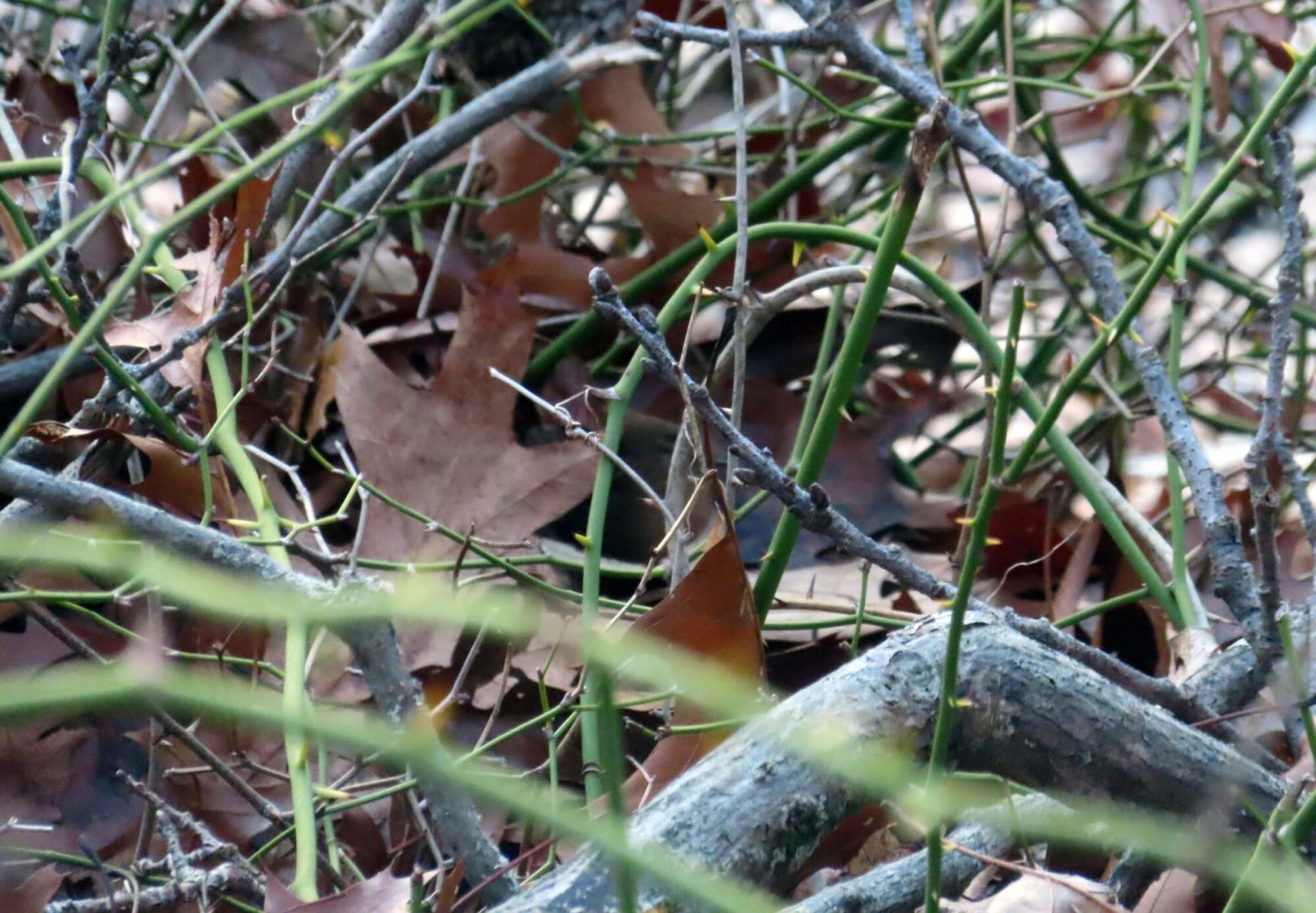With only an hour to spare before sunset, it’s not exactly prime time for birding. Nonetheless, my Dad and I don our binoculars and head out to Rosemary Brook, a local marshy stream, to look for some ducks. The air is cold, but not windy as we hike through the shady brookside trail. The sun is setting already, bathing the water in golden light. The rattle call of a kingfisher echoes in the distance and the low, guttural “guh-warrrrr” of a male Hooded Merganser can be heard as well.
Just a few minutes after arriving we spot a female Northern Shoveler, resplendent in her female-mallard-like plumage. She’s much smaller than a Mallard, like most of the interesting ducks in Massachusetts, and more compact. But by far the most surprising thing about this duck is her gigantic orange bill, a feature unique to members of the genus “Spatula.” I had seen this particular individual two times about a week before, but given that it hadn’t been observed for a few days, seeing this uncommon visitor was a welcome surprise. Swimming towards the shore near the parking lot at remarkable speeds, she briefly stops and stands on a dam to preen before swimming away once again.

The rattling grows louder as the belted kingfisher draws nearer. Landing perfectly on a long, thin stick, the kingfisher perches, pumping its tail enthusiastically as it continues his raucous call. This is a male, distinguished from females by the lack of orange on his breast. His plumage mostly consists of a pale blue and white, with black on his primaries and lores. After a bit of screaming, he flies away again, off to another part of the brook out of view.
A moment after the kingfisher flies, some high pitched “cheemp” calls emanate loudly from a nearby bush. Quickly, I turn to look at the source of the sound, and then I spot it. About three and a half feet away, in the deep undergrowth is the unmistakable face of a Winter Wren. The bird is tiny, much smaller than a House Wren. It’s umber above, with a warm brown breast that fades to black towards the undertail. It has a vague supercilium, but less so than a Carolina Wren, and a short tail pointed upwards, almost forming a right angle where it meets the wing.
I fumble for my camera, but it’s no use; my camera insists on focusing on the sticks instead of the wren, as if I don’t have enough photos of branches already. The Winter Wren though is quite cooperative, offering good views of its dazzling plumage. Eventually, it hops down deeper in the brush, but still remains within sight. He slowly heads towards the parking lot, calling often but never singing. For a second he pops in the light, only to disappear again further down the path.
After many good looks, but seldom decent photos, he flies away for good, most likely hunkering down for the night ahead. As we leave, a gang of crepuscular cardinals appear, about ten in total. This gathering recalls a trip to the brook just one month ago where a total of twenty-one cardinals coalesced. Though the males are unmistakable in their scarlet cloak and dark mask, the female’s plumage is subtle, yet beautiful: cinnamon overall with red tips on the wings and crest. Their common “chip” call fills the air as they hop around, searching for grub on the forest floor. With the sun setting, we head back home with one more great birding trip added to the many that will come in the new year.
